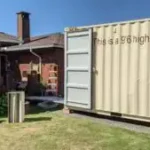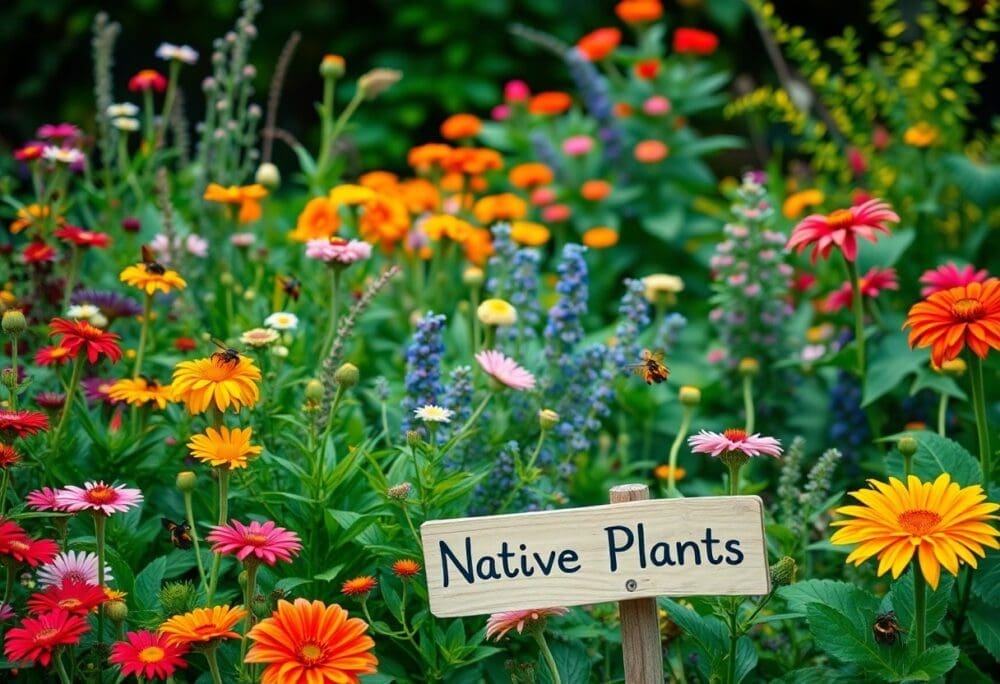Just by choosing native plants for your garden, you can create a vibrant ecosystem that thrives with minimal intervention. These plants are adapted to your local climate and soil, requiring less water and maintenance than their non-native counterparts. By incorporating native species, you not only enhance the beauty of your space but also support local wildlife, including pollinators and birds. In this post, you will learn how native plants can transform your gardening practices into a sustainable and eco-friendly approach.
Key Takeaways:
- Native plants are adapted to local climates and soils, requiring less water and maintenance compared to non-native species.
- Incorporating native plants into gardens supports local wildlife, including pollinators and birds, which are crucial for ecosystem health.
- Using native plants in landscaping can enhance biodiversity and contribute to sustainable gardening practices by minimizing the need for chemical fertilizers and pesticides.
Understanding Native Plants
The term native plants refers to species that naturally grow in a specific region without human intervention. These plants have adapted to their local climate, soil, and wildlife, and play an crucial role in maintaining the balance of their ecosystems. By choosing native plants for your garden, you can foster a landscape that thrives with biodiversity and resilience, allowing you to create a beautiful space that requires less maintenance and resources.
Definition and Characteristics
To appreciate native plants, you must first understand their defining characteristics. Native plants are indigenous to a particular area and have evolved over time to coexist with local environmental conditions and wildlife. They often have deep root systems, drought resistance, and the capacity to attract native pollinators, making them well-suited for sustainable gardening practices.
Importance in Ecosystems
An crucial aspect of native plants is their role in supporting ecosystems. They provide food and habitat for a variety of wildlife, including birds, insects, and small mammals. By fostering these species in your garden, you contribute to the preservation of biodiversity, which ultimately benefits the health of the environment.
Understanding the importance of native plants in ecosystems allows you to see the bigger picture of your gardening efforts. When you integrate native species into your landscape, you help sustain populations of pollinators and other wildlife that depend on these plants for survival. Your garden becomes a piece of the larger ecological puzzle, aiding in soil health, water conservation, and the natural cycling of nutrients. It also creates a thriving habitat that encourages rich interactions between plants and animals, benefitting not only your garden but the environment as a whole.
Benefits of Native Plants in Gardening
One of the most significant advantages of incorporating native plants into your garden is their ability to thrive in local conditions. They require less water, fertilizers, and pesticides compared to non-native species, ultimately resulting in reduced maintenance and lower costs. By choosing native plants, you also contribute to the preservation of local ecosystems, enhance your garden’s aesthetic appeal, and support the overall health of your community’s environment.
Biodiversity and Habitat Restoration
Beside enhancing your garden’s beauty, native plants play a vital role in supporting local wildlife. They provide necessary habitats for birds, insects, and other organisms, fostering a balanced ecosystem. By planting native species, you can help restore biodiversity in your area, creating a flourishing environment that encourages the coexistence of native flora and fauna.
Water Conservation and Soil Health
Among the many benefits of native plants is their ability to conserve water and improve soil health. These plants are adapted to the local climate, requiring less irrigation, which helps to reduce your water usage significantly. Their extensive root systems also contribute to soil stability, prevent erosion, and enhance soil quality by improving nutrient cycling and fostering beneficial microbial activity.
Plus, by integrating native plants into your garden, you not only conserve water but also promote better soil health. The deep-rooted systems of these plants allow them to access moisture and nutrients deep within the ground, reducing the need for additional watering and fertilizers. This results in a more self-sustaining garden ecosystem that can withstand drought conditions while enriching the soil over time. By making this choice, you ultimately help build a more resilient landscape in your outdoor space.
Choosing the Right Native Plants
Keep in mind that selecting the right native plants is imperative for creating a sustainable garden. Research the flora native to your local area, considering factors such as climate, soil type, and available sunlight. By choosing plants that naturally thrive in your region, you can ensure a healthier garden ecosystem that requires less water and maintenance, while also providing habitat for local wildlife.
Regional Considerations
Behind every successful garden lies an understanding of regional conditions. Take time to study your local climate zones, soil types, and native plant communities. Consulting local gardening experts, nurseries, or extension services can provide invaluable insights tailored to your area. This knowledge will help you select the best plants that will flourish naturally in your specific environment.
Planting and Maintenance Tips
Considerations for planting and maintaining native plants are vital to the longevity of your garden. Start your native plants in well-drained soil and position them according to their sunlight needs. Once planted, offer minimal intervention; water them during dry spells and avoid using synthetic fertilizers or pesticides. Maintain a mulch layer to help retain soil moisture.
- Water moderately and adjust based on rainfall.
- Avoid overcrowding plants to promote good air circulation.
- Monitor for pests as most native plants are resilient.
The right upkeep helps foster a vibrant, self-sustaining garden.
Another aspect to consider is the timing of planting your native species. Ideally, you should plant in the early spring or fall, allowing the roots to establish before extreme weather. Additionally, regular weeding and monitoring for any plant stress will support your garden’s health. Native plants generally require less care once established, making them a perfect choice for your sustainable gardening journey.
- Opt for organic mulch to suppress weeds naturally.
- Prune dead or damaged foliage to encourage new growth.
- Consider companion planting for biodiversity.
The combination of these practices will help you cultivate a thriving native landscape.
Creating a Sustainable Garden Design
Once again, when designing your garden, it is vital to consider the ecological impact of your choices. By weaving in native plants, you not only enhance biodiversity but also create a self-sustaining ecosystem that requires less maintenance and resources. A sustainable design should complement the natural landscape while addressing your personal gardening needs, resulting in a thriving environment for both plants and wildlife.
Designing with Native Plants
With native plants as the foundation of your garden design, you can create a resilient landscape that adapts to your local climate and soil conditions. These plants are already suited to your region, meaning they require less water, fertilizer, and pesticides, making your gardening practices more sustainable. Additionally, they attract local pollinators and support wildlife, which contributes to a balanced ecosystem.
Incorporating Other Sustainable Practices
Among the various methods to enhance sustainability in your garden, implementing practices such as composting, rainwater harvesting, and organic gardening techniques can significantly reduce your environmental footprint and improve soil health.
This approach allows you to maximize resources and minimize waste. By composting your kitchen scraps and yard waste, you turn organic materials into nutrient-rich soil amendments, benefiting your plants. Rainwater harvesting captures and stores rain for irrigation, reducing reliance on municipal water supplies. Additionally, practicing organic gardening ensures that your garden remains free from harmful chemicals, promoting a healthier environment for you, your plants, and local wildlife.
Overcoming Challenges in Native Gardening
Many gardeners face challenges when it comes to growing native plants. Factors such as varying soil conditions, climate changes, and local wildlife can all impact your garden’s success. By researching your specific environment and selecting native species that thrive in your area, you can effectively navigate these obstacles and create a resilient, sustainable garden. Embracing patience and adaptability will also help you establish a flourishing native landscape over time.
Common Pests and Diseases
Against the backdrop of a thriving native garden, common pests and diseases may pose a threat to your plants. You should monitor your garden closely for signs of infestations or fungal issues. Implementing natural pest control methods, such as encouraging beneficial insects and maintaining healthy plant systems, can assist you in managing these challenges effectively while preserving your garden’s ecological balance.
Addressing Invasive Species
Addressing invasive species in your garden is important to maintaining your native plant’s health and vitality. It’s important to identify any non-native plants that may be interfering with your garden ecosystem. By regularly monitoring your garden and removing invasive plants before they can spread, you can create a healthier environment for your native species to thrive.
Species such as Japanese knotweed or garlic mustard can outcompete natives for resources, ultimately diminishing the biodiversity of your landscape. You must stay vigilant in controlling these invasives through manual removal or permissible herbicides, always ensuring that your native plants are not harmed. Educating yourself about the local ecosystem and prioritizing biodiversity will enhance the overall sustainability of your garden, creating a thriving habitat for both plants and wildlife.
Case Studies of Successful Native Plant Gardens
After examining various case studies, you can see the benefits of native plant gardens in action. Here are some notable examples:
- City of Chicago: Over 30% reduction in stormwater runoff with native plant installations in parks.
- University of Delaware: Achieved a 50% increase in local pollinator populations due to native landscaping.
- New York’s High Line: Showcased native plants that garner 300,000 visitors annually while promoting biodiversity.
- Los Angeles County: Restored over 10 acres of habitat, leading to a 25% increase in regional bird species.
You can explore more about this topic in-depth in the article For Wildlife and Humans, Native Plants Are a Key to ….
Community Examples
Any community can benefit from native gardens, as seen in various local initiatives. For instance, a neighborhood in Portland, Oregon transformed an underutilized park into a vibrant native plant sanctuary, seeing an influx of wildlife and increased community engagement. Similarly, a community group in North Carolina established a native plant garden in their town center, fostering education on sustainable practices and attracting visitors.
Individual Success Stories
Studies showcase how individual efforts with native plants lead to impressive results. Homeowners who transitioned to native species in their landscapes report reduced maintenance time and costs, while enhancing the overall aesthetics of their properties. These transformations often lead to increased biodiversity, welcoming birds, butterflies, and beneficial insects into your outdoor space.
Understanding the individual success stories of native plant gardening demonstrates the tangible benefits you can reap in your own garden. For example, homeowners have noted a 40% decrease in water usage after replacing traditional lawns with drought-resistant native plants. Additionally, these gardens can increase property values, with one survey showing homes with native landscaping selling for 15% more than those with conventional designs. By engaging in native gardening, you contribute positively to the environment while enhancing your personal space.
Conclusion
Drawing together the principles of sustainable gardening, you’ll find that native plants are your best allies. By incorporating these species into your garden, you create a thriving ecosystem that supports local wildlife and conserves resources. Your efforts contribute to biodiversity and water conservation while reducing the need for chemical fertilizers and pesticides. Embracing native plants not only enhances the beauty of your space but also fosters environmental stewardship, making a positive impact on your community and beyond.
Q: What are native plants and why are they important for sustainable gardening?
A: Native plants are species that naturally occur in a specific region or ecosystem without human introduction. They play a vital role in maintaining the local ecology by supporting wildlife, including birds, pollinators, and other beneficial insects. By incorporating native plants into your garden, you create a habitat that promotes biodiversity, reduces reliance on chemical fertilizers and pesticides, and conserves water, making them an necessary component of sustainable gardening.
Q: How do native plants contribute to soil health in gardens?
A: Native plants have evolved alongside local soil conditions, and their root systems are typically well-suited for improving soil structure and fertility. These plants can enhance soil health by preventing erosion, increasing organic matter through leaf litter, and encouraging beneficial microbial activity. Additionally, many native plants have deep roots that help in nutrient cycling and can extract water from deeper soil layers, ultimately enriching the overall quality of the soil and supporting a healthier garden ecosystem.
Q: Can I incorporate native plants into a garden with non-native species, and how can I create a balanced garden environment?
A: Yes, you can incorporate native plants alongside non-native species; however, it’s necessary to select non-invasive varieties that will not compete with or harm the native flora. Create a balanced garden environment by choosing plants that complement each other in terms of their growth requirements, such as water and sunlight. Designate areas of your garden for native plants that thrive in local conditions, and position non-natives in areas where they can coexist without overpowering the native species. This approach enhances the biodiversity of your garden while maintaining a healthy ecosystem.





